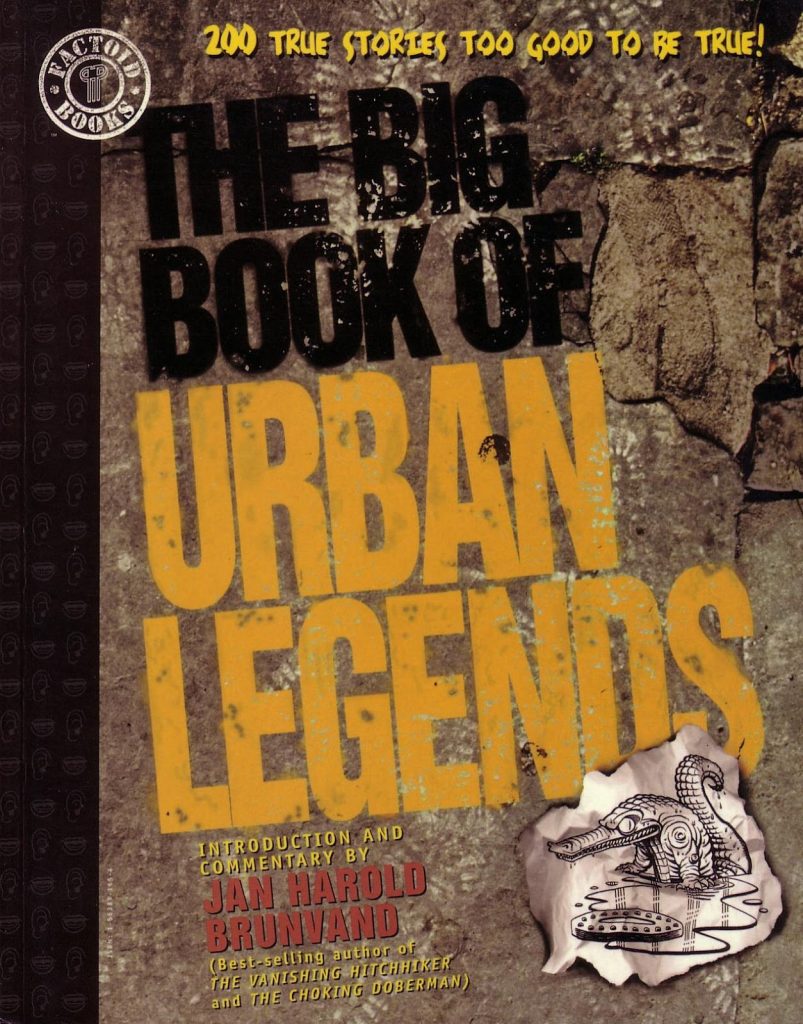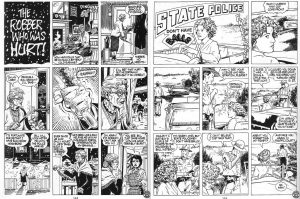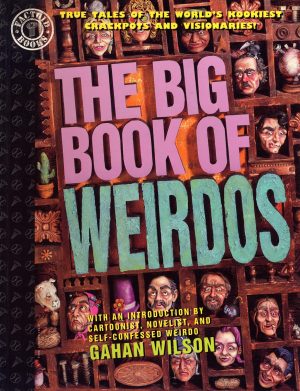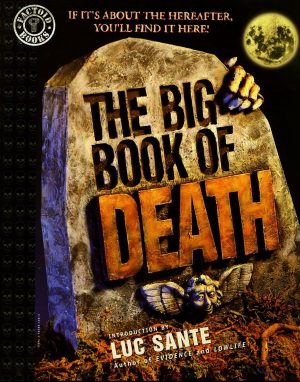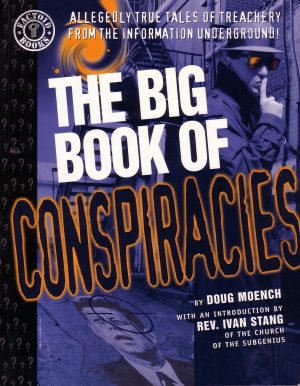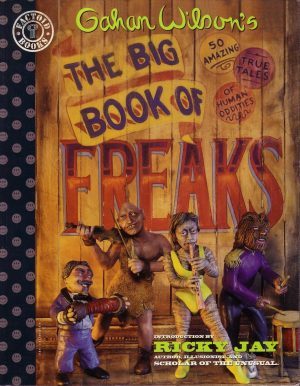Review by Frank Plowright
The Big Book of… developed into a consistently informative and amusing series with the sideline of showcasing the work of multiple good artists working in all styles, many of them relatively new. However, with fifteen companion volumes subsequently issued The Big Book of Urban Legends being the first shows the teething problems subsequently ironed out.
Folklorist and collector of urban myths Jan Harald Brunvand supplies an introduction to two hundred single page stories, most adapted from his books. All the classics feature. There’s the spiders nesting in the hair, assorted variations on the escaped lunatic, the alligators in the New York sewers, and the toothbrush story. Of course, they all happened to a friend of a friend. In the pre-internet era these stories were circulated by word of mouth (although a few have slipped into less thorough newspapers), and not as familiar than they now are when a quick web search provides plenty of specialised pages on the topic. Still, with the amount on offer here, there are bound to be some readers haven’t previously come across, or have forgotten.
This is the only Big Book imposing a uniform one page limit to every entry, and it’s very constricting. Some stories could do with some breathing space, and others could be merged. A matter preventing cover to cover reading in a single session is repetition as writers Robert Loren Fleming and Robert F. Boyd have a limited number of storytelling methods. The similarity becomes very apparent, not helped by the grouping of similar stories together, such as a succession of calamities ending with the medical staff dropping a patient on hearing the circumstances of their injury. Down to Fleming and/or Boyd though are the attempts to lead the stories to a joke punchline, which is so often forced, and unconvincing narrators.
Artistically also this is far more the mixed bag than later volumes would be. The sheer number of artists required means a greater reliance on newcomers and on this showing some aren’t very good, while others haven’t yet developed into what they’d become. Others are great lost talents who, it’s to be hoped, have been richly rewarded by other forms of illustration. Many artists who’ll be with the Big Books throughout the series like Hunt Emerson, Rick Geary, and Roger Langridge are here from the beginning, and the sample art showcases Robin Smith, a stalwart over the early volumes, and the delicacy of Chris McLoughlin, largely unknown, but very talented.
The Big Book of Weirdos is next.
